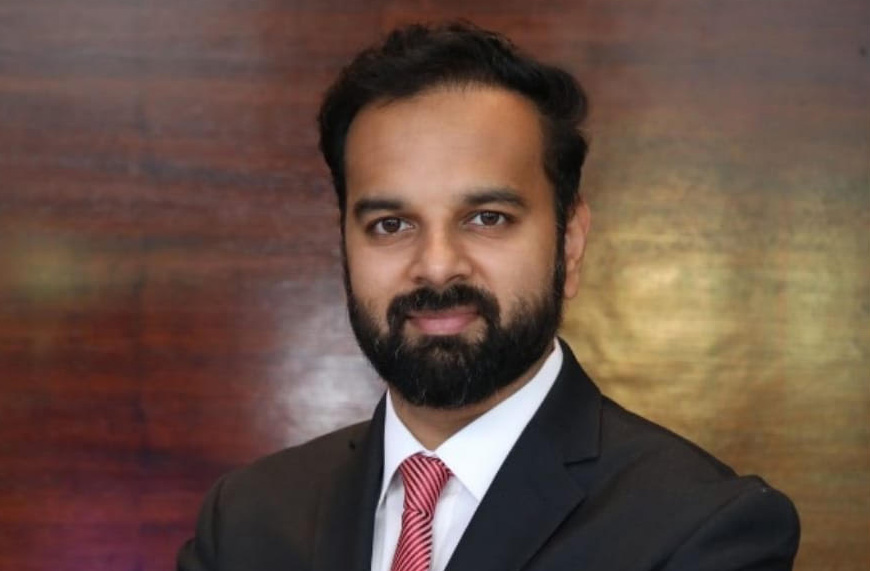How Roche Diagnostics India is making personalised and preventative healthcare a reality
Diagnostics play a vital role across the entire healthcare value chain, from screening, detection and prognosis to patient stratification and condition monitoring. As healthcare technology advances, medical laboratories need to keep ahead of the curve on trends for optimal operation and interoperability.
Narendra Varde, Managing Director, Roche Diagnostics India & Neighboring Markets speaks with ET Insights on how the company is creating opportunities to transform the role of diagnostics, the barriers facing the sector today, and how it is creating new tools and technologies to improve patient care in a sustainable manner. Edited Excerpts:
Diagnostics play a leading role in both disease prevention and management, and influences approximately two-thirds of all clinical decision-making, despite accounting for only about 2% of total healthcare spending? Also, as compared to countries like the US or Australia, diagnostics in India is significantly underpenetrated. What are some of the challenges?
Yes, diagnostics accounts only for 2% percent of the healthcare spending, and close to 70% of all clinical decisions are taken based on the diagnostics report.
The diagnostic industry in India has a high degree of fragmentation with over 1,00,000 labs, out which only around 3500 are accredited. This fragmentation poses a challenge in terms of capability, scalability, and quality of labs. However, this also provides an opportunity to consolidate newer business models.
Lack of regulation and access in tier 3 and 4 cities is another concern. The government has started to look at these areas and ease some concerns.
How are you leveraging digital tools and technologies to provide value in healthcare beyond the diagnostic sample results?
We are heavily leveraging data analytics and workflow integration to gain insights. For instance, we are developing data-driven (cloud-based) software solutions like the Navify Decision Support portfolio. The solutions usews analytics and data science to streamline workflow and data management for timely, individualised treatment decisions.
Another example is our Digital Pathology solution that creates opportunities for better collaboration and remote diagnosis. This can prove to be lifesaving in areas with limited access to pathologists. Around five years ago, we couldn’t have reported a Triple-negative breast cancer (TNBC) with Programmed death-ligand 1 (PD-L1) positivity to be scored and reported in minutes. This is made possible today with the help of digital pathology.
Artificial intelligence is another technology that has helped to facilitate the analysis and interpretation of pathology images, which can benefit cancer patients through more precise diagnosis and potentially better targeted treatment options.
What is the Roche Digital Pathology Open Environment?
Roche Digital Pathology Open Environment offers tools for laboratories to develop their own algorithms, fully embedded in the pathology workflow software. The aim is to improve patient outcomes and expand personalised healthcare through innovative image analysis tools.
The ‘Open Environment’ allows for the secure exchange and flow of data so that pathologists can access advanced algorithms from third parties alongside Roche’s menu of AI-based image analysis tools.
With this, software developers will be able to easily integrate their image analysis tools for tumour tissue with Roche’s enterprise software. Ultimately, innovative pathology imaging tools can support the selection of the most appropriate targeted therapy option for each patient.
Laboratorians want to focus on the tasks that matter most, providing life-impacting results. What has been your effort to create laboratories of the future, and what will such labs look like?
In a fully integrated core lab of the future, lab technicians will no longer be required to run from one lab to another to perform tests.
It will be multidisciplinary. They will all be part of the central lab, whether it’s molecular, urinalysis, or mass spectrometry.
Everything will be achievable through centralised, automated systems, which will include a single user interface that can run the entire system.
The Integrated Core Lab is the diagnostics of the future, and it is already a reality. The AIIMS smart lab at Delhi has consolidated operations from multiple labs into it, thereby optimising time and cost efficiencies. Patients too no longer need to run from one lab to the other.
We have already established the concept of the Serum Work Area (SWA) with the integration of clinical chemistry and immunochemistry to help consolidate workload and maximize lab resource use. Our registered cobas connection modules (CCM) are designed for high throughput laboratories adding predictability for the shortest time to results.
From an Indian context, what are some of the disease patterns that people need to be cautious about?
India is witnessing an exponential increase in noncommunicable diseases (NCDs) which is being fuelled by a combination of factors such as rapid urbanisation, sedentary lifestyles, unhealthy diets, etc.
We see that the pandemic has radically altered the way we view health and healthcare. People in India are becoming more aware of healthy lifestyles. But the rise in NCDs such as diabetes-related heart disease, strokes, and kidney failure paint a very different picture.
We have been working towards bringing tests like clinical blood tests for diabetic patients, such as N-terminal-pro hormone BNP (NT-proBNP), which can aid in monitoring heart conditions for type 2 diabetics, allowing for proper medication and preventing adverse outcomes.
Cardiac biomarkers such as Troponin T-high sensitive (TnT-hs) can reduce the time needed to rule-in or rule-out the occurrence of a heart attack within an hour.



